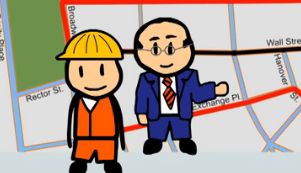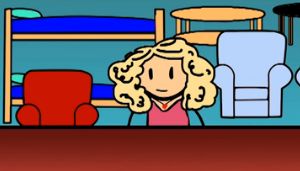Types of Job Redesign: Job Enrichment, Enlargement & Rotation
After you watch the video and know the material, click HERE for the quiz.
Managers must be aware of ways to increase employee motivation. This lesson describes the various ways to redesign a job to encourage employees, including job enrichment, job enlargement and job rotation.
Job Redesign
When you do the same job day-in and day-out, it can become mundane or boring. It may seem like you show up to work, go through the motions and come back the next day to do it all over again. Sometimes it's not the type of work that needs a makeover but the tasks, responsibilities and roles that do. Job redesign looks specifically at ways to expand an employee's job by redesigning certain aspects relating to the scope and depth of what it is that an employee does and is responsible for at the organization. In doing so, the manager essentially prevents an employee from losing motivation and interest in their work. There are three ways a manager can redesign an employee's job: job enrichment, job enlargement and job rotation.
 |
Job Enrichment
Job enrichment provides an employee with more tasks to do as a part of their job, as well as the responsibility and authority needed to complete those additional tasks. What works particularly well to increase motivation is when job enrichment includes additional tasks that match the skills, knowledge and abilities the employee already has. For example, let's say Molly works as a receptionist at a beauty salon. Her duties typically include answering the phone, setting up appointments, greeting customers and completing payment transactions after the client is finished with their stylist. However, there are times when Molly is left with nothing to do but stare out into the parking lot. Molly often complains that she is bored and has even told some of her fellow employees that she is considering looking for a new job that is more challenging.
 |
Job Enlargement
Job enlargement is a job redesign strategy that increases only the tasks of a particular job. While job enlargement is limited in that it does not provide the additional responsibilities or authority that job enrichment does, it is useful in reducing some of the monotony associated with doing the same thing day-in and day-out. The belief is that once boredom is reduced, motivation to perform at higher levels of productivity increases.
For example, Jeff works as a trash man for the city. His boss might switch the routes that Jeff has to cover or may ask him to pick up the recycling routes in addition to his routine trash routes. Even though Jeff is not given an extra authority or challenge by taking these additional routes, it does provide Jeff with new tasks that can lessen the repetitiveness of his usual trash route.
 |
Job Rotation
Job rotation is the final job redesign strategy that assigns workers to an alternate job on a temporary basis. Job rotation is useful and motivating in several ways. First, it provides employees with something new to learn and do beyond what their normal job does. Second, it provides employees with a broader perspective on how the organization operates as a whole. Third, it increases the employee's understanding of what his or her coworkers do, which leads to a higher degree of respect for what others do. Finally, it offers an employee the chance to gain additional skills, which increases their value to the organization. Essentially, job rotation is great at adding variety and encouraging respect among peers, while sparking new interest in the organization.
 |
For example, Jane and Bob both work at a furniture store. Jane in customer service and Bob is in delivery. To help motivate Jane and Bob, as well as expose them to the dependence their individual jobs have on each other, their managers decide to have Jane switch jobs with Bob for the week. After just a few hours, the two quickly realize that the other person's job is not as easy as they used to think it was. They learn about the tasks and responsibilities the other person has to account for in their jobs. This newfound knowledge creates a new interest and enthusiasm for both Jane and Bob.
Lesson Summary
Let's review. Job redesign looks specifically at ways to expand an employee's job by redesigning certain aspects relating to the scope and depth of what it is that an employee does and is responsible for at the organization. There are three ways a manager can redesign an employee's job: job enrichment, job enlargement and job rotation.
Job enrichment provides an employee with more tasks to do as part of their job as well as the responsibility and authority needed to complete those additional tasks. What works particularly well to increase motivation is when job enrichment includes additional tasks that match the skills, knowledge and abilities that the employee already has. Job enlargement is a job redesign strategy that increases only the tasks of a particular job. While job enlargement is limited in that it does not provide the additional responsibility or authority that job enrichment does, it is useful in reducing some of the monotony associated with doing the same thing day in and day out. The belief is that once boredom is reduced, motivation to perform at higher levels of productivity increases. Job rotation is the final job redesign strategy that assigns workers to an alternate job on a temporary basis. Job rotation is great at adding variety and encouraging respect among peers, while sparking a new interest in the organization.